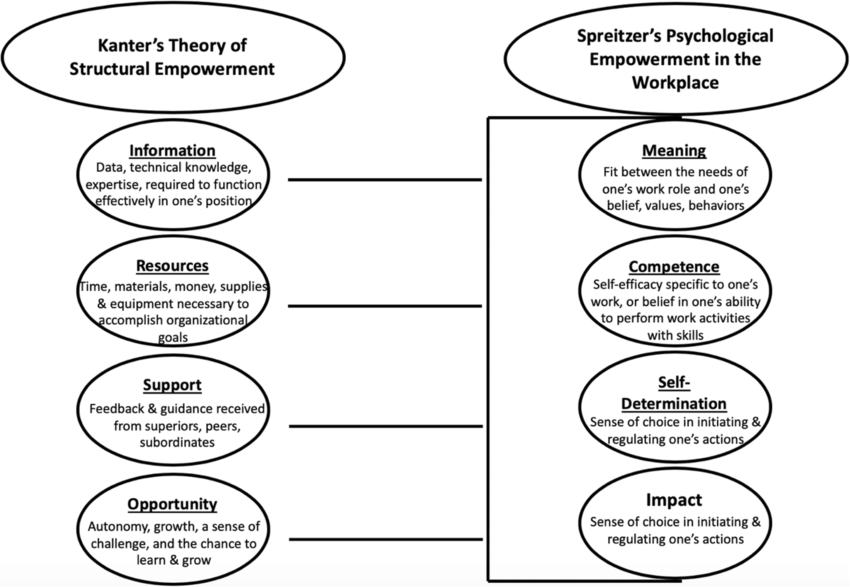Kanter’s Theory on Structural Empowerment
Kanter’s structural empowerment theory (1977) focuses on the organization’s mechanisms instead of the individual values (Valdez, et al., 2019). Kanter argues that when organizational leaders influence and inspire others, their power is expanded. Consequently, high level of organizational performance is achieved (Larkin, et al., 2008). Moreover, Kanter believes that when individuals are provided with resources, knowledge, and encouragement, their skill sets are strengthened, and they are able to make decisions based on facts or information. These individuals also achieve better outcomes which benefits the entire organization (Laschinger, et al., 1998).
The Kanter’s concepts described in Kanter’s structural empowerment theory are functionally correlated with the nursing care process that can be objectively applied to nurses’ relationships with their patients and nursing care outcomes. According to Larkin, et al. (2008), there are six conditions for empowerment to occur: opportunity for advancement, access to information, access to support, access to resources, formal power, and informal power. Providing these conditions to nurses results in increased work satisfaction, loyalty, and confidence, as well as a significant reduction in work-related stress.
With the evolution of healthcare in the last decade, there have been numerous challenges for healthcare organizations. Such challenges have compelled healthcare entities and leaders to reconsider their operational and structural plans. Kanter’s theory is still relevant today as one of the most fundamental frameworks for improving organizational efficiency (Valdez, et al., 2019). Leaders’ implementation of empowerment models such as the Magnet Hospitals structural empowerment guarantees the organization of success during challenges situations.
Kanter’s structural empowerment theory includes a discussion of how leaders empower their employees, which is an essential explanation and description for today’s leaders. As suggested by the theory, how an organization operates has a significant impact on how employees shape their beliefs and behaviors. Laschinger, et al. (1998) contend that employees behave accordingly depending on whether or not such structures are in implemented or not. Many leaders today seek to empower their staff by delegating authority and decision-making to them, sharing information with them, and requesting for their feedback.







